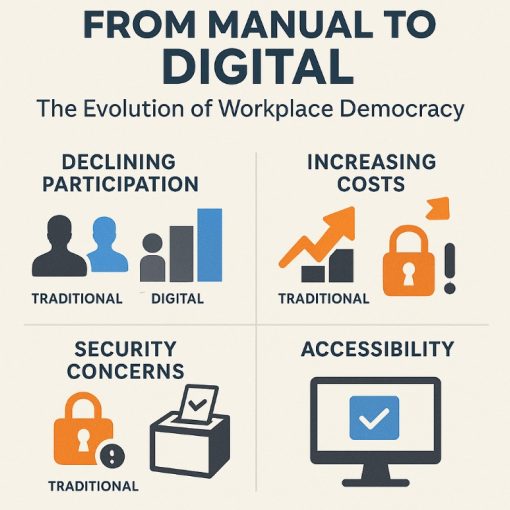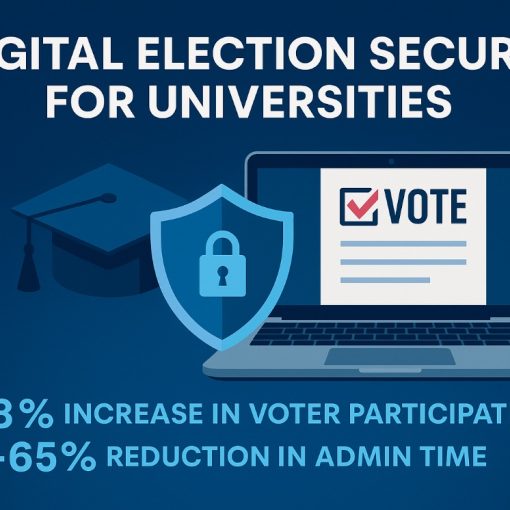Let’s talk about online voting security
A friend recently asked me, “Is online voting actually safe?” It’s a fair question – and one I’ve heard countless times over my years working in election technology. Rather than giving my usual quick answer, I thought it deserved a more thoughtful response, which is what prompted this post. These considerations are especially important for online voting security.
Real-world impact
It’s easy to get caught up in theoretical discussions, but what matters most is how these systems work in practice. In Estonia, they’ve consistently used online voting since 2005 with increasing participation rates in each election. This isn’t just a fluke – it’s a sign of where voting technology is headed.
My experience with online voting security
My cousin Lisa lives in a rural area about 40 miles from the nearest town. She’s never missed an election in her life, but last year she broke her hip three weeks before election day. With no way to get to her polling place and no early voting options available in her county, she missed voting for the first time in 42 years. These are the real-world problems that technology can help solve. This experience directly relates to how I approach online voting security today.
Now, you might be wondering…
Challenges we still face
Let’s be honest – online voting security isn’t a magical solution to all voting problems. There are legitimate concerns about digital divides, technology access, and varying levels of technical literacy. Any successful implementation needs to account for these realities.
And yes, solutions involving biometric authentication are showing particular promise in addressing some of these issues, though they’re not without their own complications.
What works in practice
Through years of development and real-world testing, we’ve found that certain approaches consistently deliver better results. At OnlineVotingApp, our 2-Factor Authentication has proven particularly effective.
Our login system requires both a password and a one-time password (OTP) to ensure voter identity is properly verified. This extra layer of protection blocks unauthorized access attempts while remaining simple enough for all voters to use.
You might be wondering how all this affects your organization.
A survey of over 3,000 first-time voters found that 78% would prefer digital voting options, while only 41% expressed high confidence in the security of such systems.
I don’t pretend to have all the answers. This field continues to evolve, and we all have much to learn. What I do know is that thoughtful implementation, rigorous testing, and genuine commitment to both security and accessibility are non-negotiable. I’d love to hear your thoughts and experiences – drop a comment below or reach out directly if you’re working on similar challenges.
Thinking about updating your voting process? Let’s talk about your requirements – get in touch for personalized advice.




